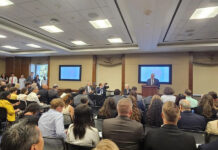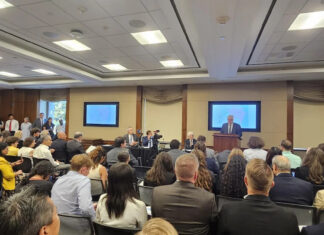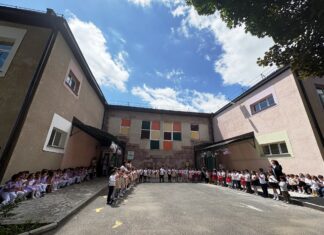“The first casualty when war comes is truth” — a platitude, to be sure, but one that has again assumed relevance in the midst of the war raging in Ukraine. Often truth, historical truth, is not collateral damage, but a primary target in conflict.
Sometimes part of that truth can be rescued. That is the message relayed by a bold measure taken by the European Parliament (EP) in regard to the assault on truth waged in 2020 by Azerbaijan as part of its war in Nagorno-Karabakh. On March 10, the European Parliament adopted a resolution on “Destruction of cultural heritage in Nagorno-Karabakh.” The vote tally was 635 in favor, 2 opposed and 42 abstentions. It stands out for its clarity of purpose and demands for forceful, effective action.
The text draws on a series of previous resolutions and conventions, of the EP as well as the United Nations Educational, Social and Cultural Organization (UNESCO) regarding the protection of cultural heritage, to denounce Azerbaijan’s wanton destruction of Armenian monuments in its attempt to rewrite history. Among the documents cited are “the European Cultural Convention, the revised European Convention for the Protection of Archaeological Heritage, and the Framework Convention for the Protection of National Minorities, to which Armenia and Azerbaijan are parties” as well as “the Hague Convention of 1954 for the Protection of Cultural Property in the Event of Armed Conflict,” to which both are also parties. This latter document contains protocols, one applied to occupied territories and the second, to cultural property, “which prohibits ‘any alteration to, or change of use of, a cultural property which is intended to conceal or destroy cultural, historical or scientific evidence’…”
The Physical Destruction
Moving to specifics, the resolution details the nature of the damage: “1 456 monuments, mainly Armenian, came under Azerbaijan’s control after the ceasefire of 9 November 2020; whereas considerable deliberate damage was caused by Azerbaijan to Armenian cultural heritage during the 2020 war, particularly during the shelling of the the Holy Saviour/Ghazanchetsots Cathedral in Shusha/Shushi, as well as the destruction, changing of the function of, or damage to other churches and cemeteries during and after the conflict, such as Zoravor Surb Astvatsatsin Church near the town of Mekhakavan and St Yeghishe in Mataghis village in Nagorno-Karabakh; whereas during his visit to the 12th century Armenian Church in Tsakuri, President Aliyev vowed to remove its Armenian inscriptions…”
The indictment does not apply only to the most recent war, but considers that “the long-running conflict has had a catastrophic impact on the cultural heritage of Nagorno-Karabakh and the region; … over the last 30 years, the irreversible destruction of religious and cultural heritage has been carried out by Azerbaijan, notably in Nakhchivan Autonomous Republic, where 89 Armenian churches, 20 000 graves and more than 5 000 headstones have been destroyed; … this has also occurred in the former conflict areas returned by Armenia to Azerbaijan, in particular the almost total destruction and looting of Aghdam and Fuzuli…”








